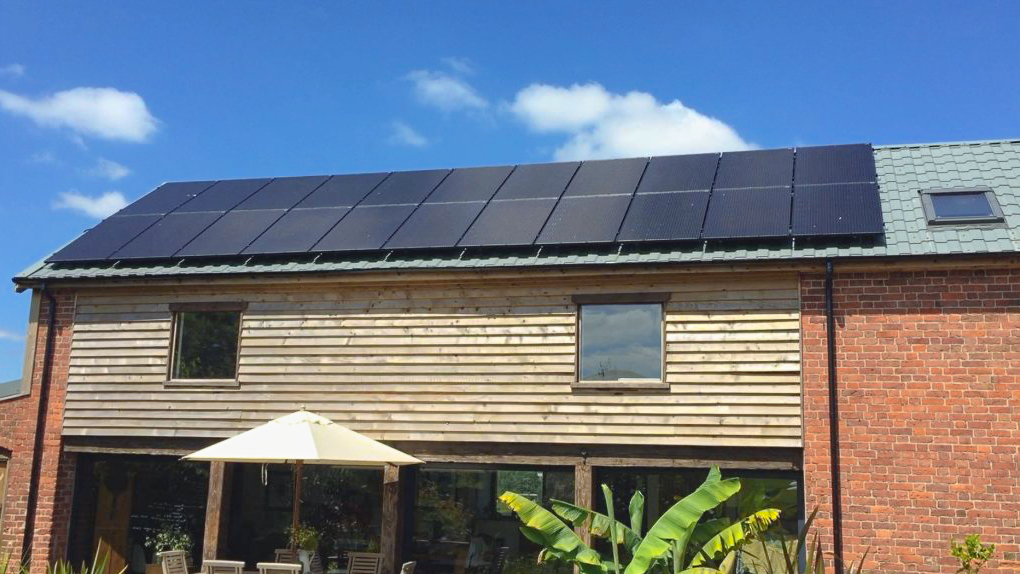We selected E-ON as our JA solar photovoltaic panels installer and they obtained all the necessary approvals for our project.
We opted for a large array consisting of 22 panels delivering 6.16kW (with an annual estimated output of 5,506kWh) in order to power the air source heat pump during the day.
Outsourced installation
What is of interest is that we were always under the impression that the installation would be carried out by E-ON’s own installation team. This proved not to be the case. The installation was sub-contracted to a specialist MCS-approved installation company.
The installer had to follow E-ON’s corporate installation guidelines and best practices were provided to this sub-contractor and all the equipment (panels, inverters, etc.) and processes were also dictated to them by E-ON ensuring a high-spec installation.
The expertise of the installers was excellent and they had dedicated sub-teams that dealt with physically installing and mounting the panels to the roof and a separate electrician team that installed the inverter and made sure the electricity supply to the house was professionally taken care of.
The physical installation was virtually hitch-free with some minor damage to the roof, which was rectified a few weeks later. E-ON’s back office team processed our paperwork within a week and were able to register with the Feed-in-Tariff (FiT) scheme before the cut-off deadline.
We are working on a video to review the JA solar photovoltaic panels.
Warning about inverters
It was not all plain sailing though. The week after the panels were put up, we had glorious sunshine and, as with all new purchases, we watched the panels’ performance and marvelled at the fact that our house was being powered by the sun. It was extremely exciting.
What we couldn’t work out was that our panels would hit 5kW and never exceed electricity production beyond this point. This went on for a few days and we raised this with E-ON, who didn’t have an immediate answer and said they’d look into it and perform diagnostics.
A week later, they informed us that the reason we were “clipping” (an industry term, apparently) at 5kW is because they had instructed the installers to fit a 5kW inverter.
We naturally questioned this: what is the point of installing 6.16kWs worth of panels if we are never going to generate more than 5kW of electricity. The answer we received is that this an industry standard and that it is common practice to fit inverters that are 20% less than the total power generation potential of the PV array.
We informed E-ON that this was not acceptable, and E-ON immediately authorised that the inverter was to be replaced with a 6kW model. This was replaced within a week, and guess what? On bright sunny days, we regularly exceed well over 5kW, and we’ve gone as far as generating 6kWs worth of power for sustained periods of time.
Check your paperwork and estimates
Our primary warning is that if you’re installing solar panels, quotations typically cite the full specifications of the solar PV panels, but every quote we received (from various solar installers) simply stated the brand of the inverter and never mentioned the size or its limits.
If your estimates only mention the name and brand of the inverter (but not its size), we strongly recommend that you question this, and get it in writing that the inverter will be big enough to handle the bulk of your PV’s electricity generating potential. From what was explained to us, inverters (SolarEdge ones) go up in kW increments, so even if you’re getting 5.8kW worth of panels (as an example), push for a 6kW inverter.
Our PV array information:
Solar: JA Solar 280W PV Panels, SolarEdge Inverter
Orientation: -20 degrees from south (SSE)
Angle of roof: 35 degrees
Shade factor: 0.98
